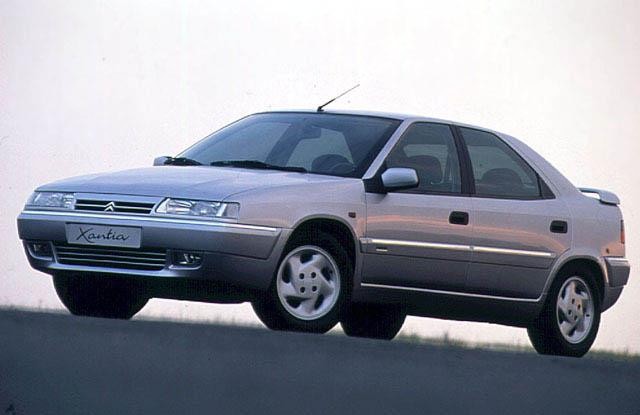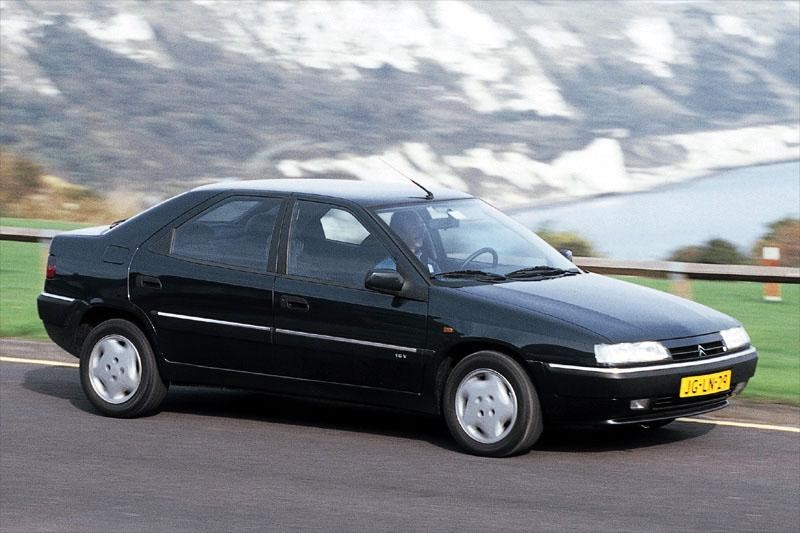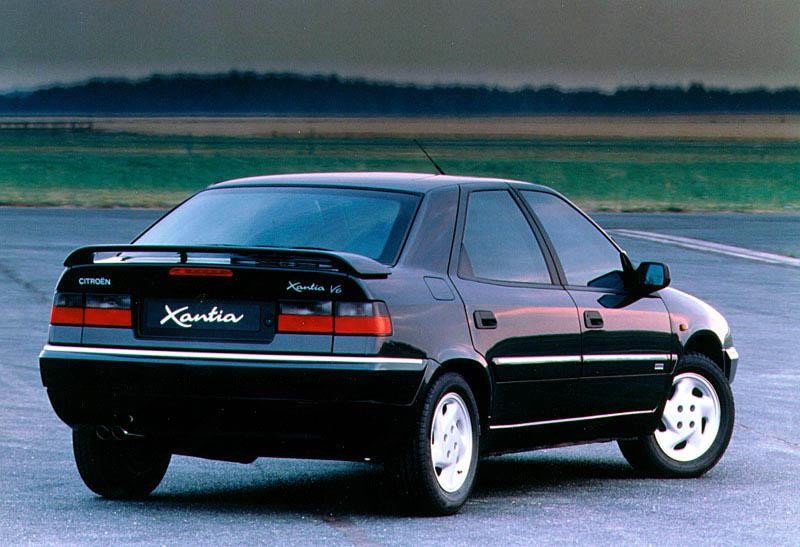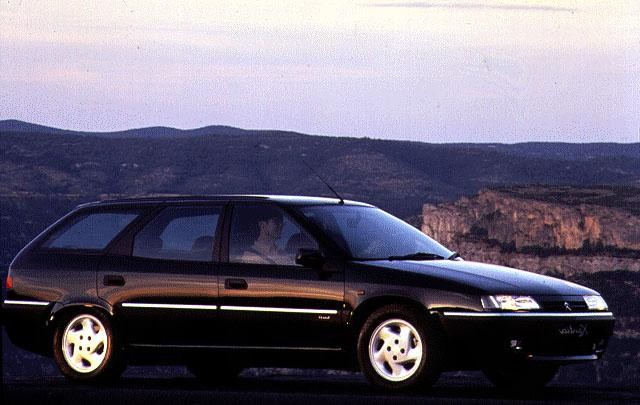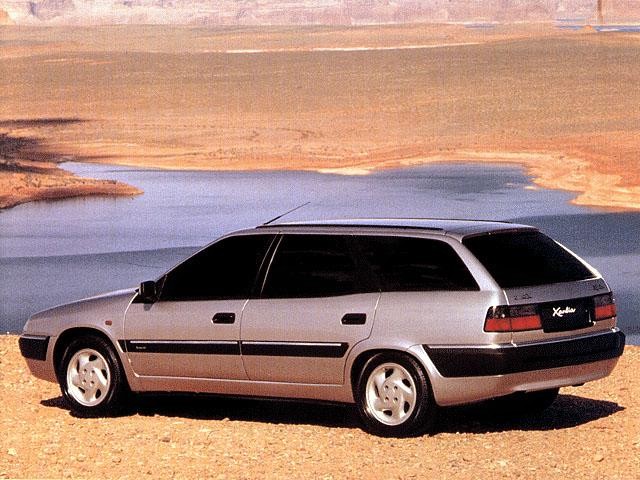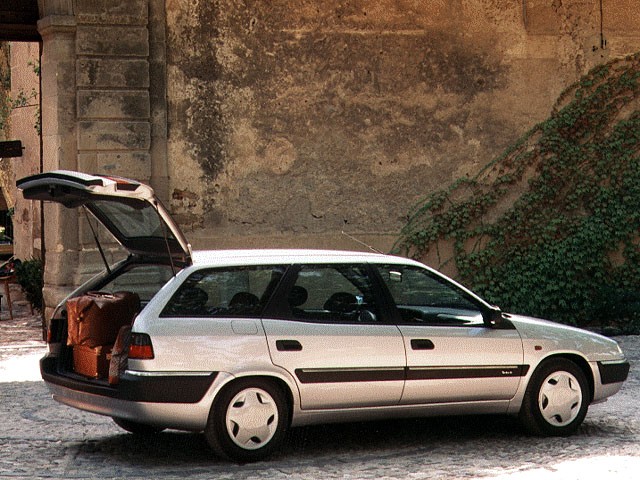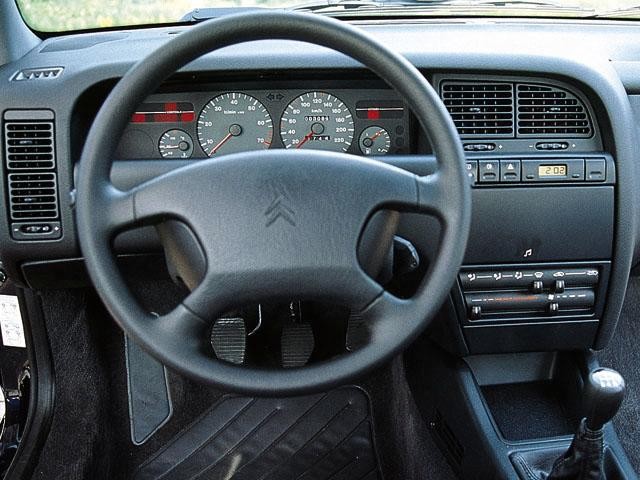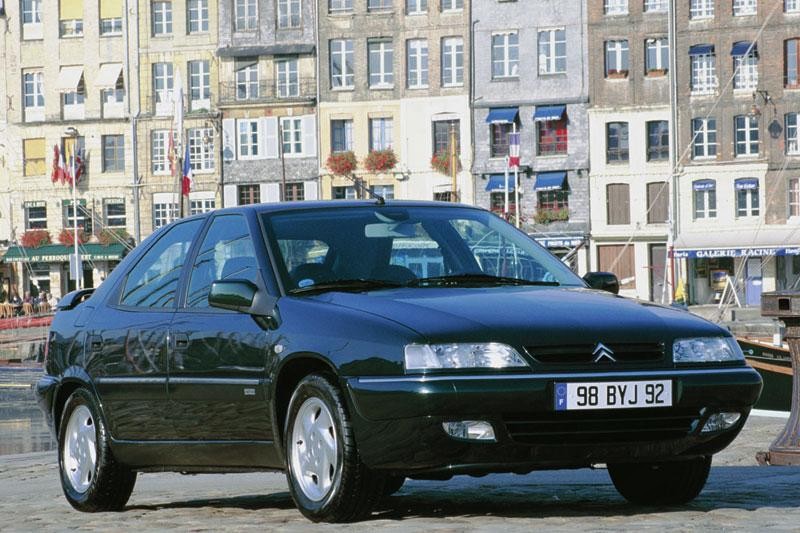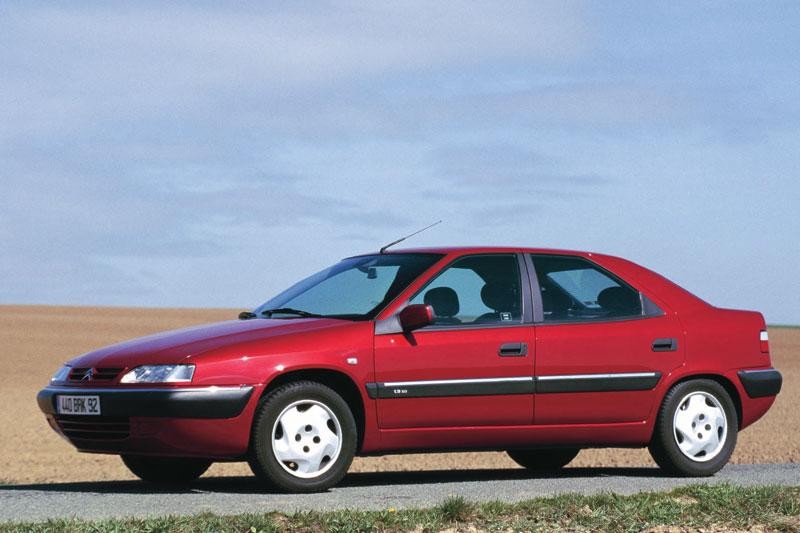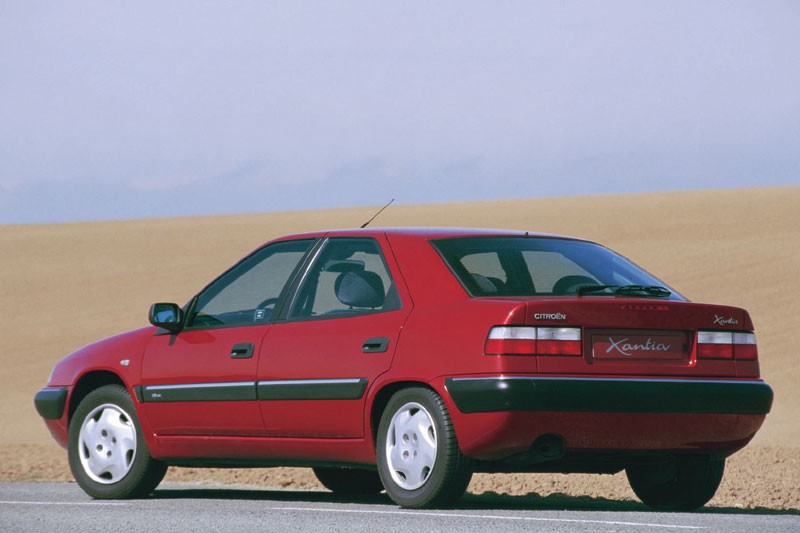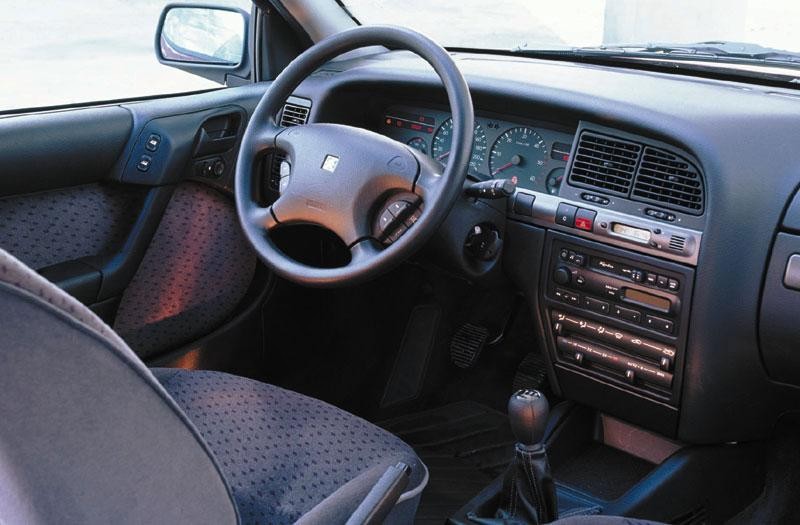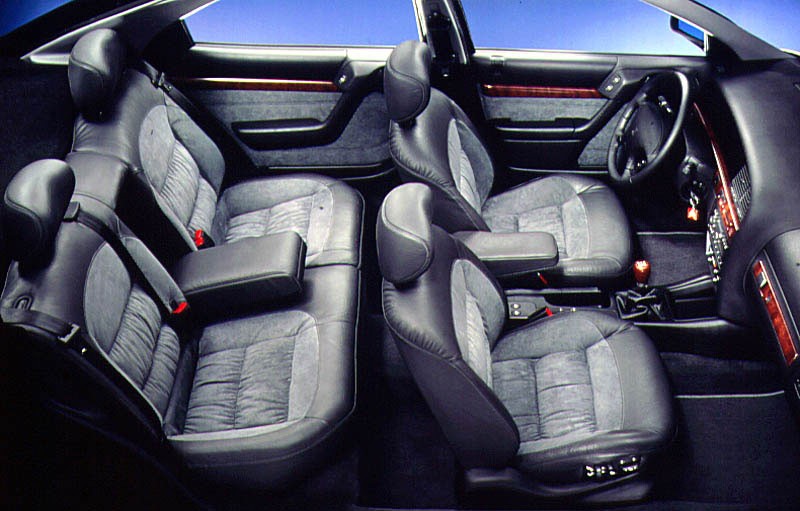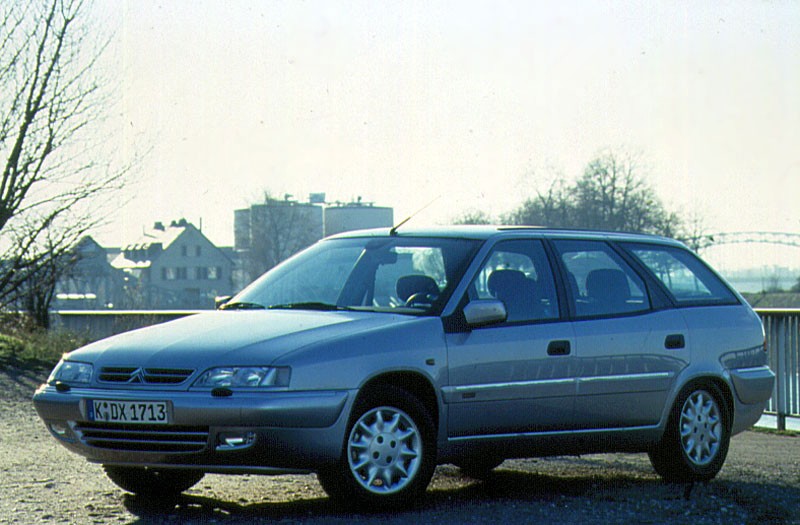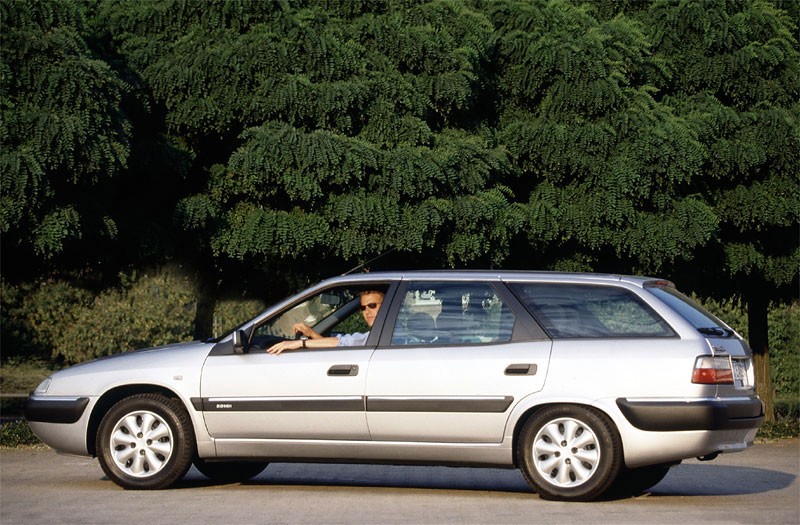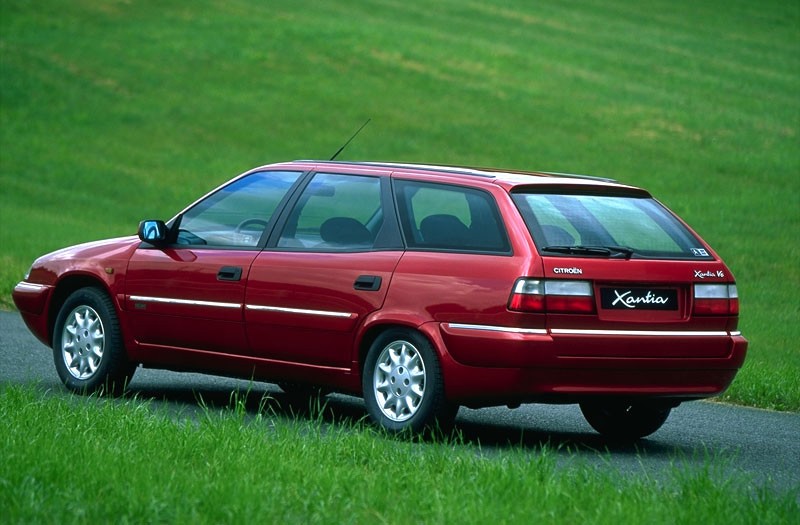
- Responsive V6 petrol engine
- Comfortable ride and impressive body control
- Limited rear seat space
- 2.0-litre petrol engine is only adequate
- Four-speed automatic transmission gives clunky downshifts
Review: Citroën Xantia (1994-01)
Review: Citroën Mk.I Xantia (1994-98)
Overview
Released in September 1994, the Citroën Mk.I Xantia was initially available as a mid-size liftback. Manufactured in Rennes, France, the front-wheel drive Xantia range initially consisted of a single variant, the 2.0i, which was available in SX and VSX editions. In November 1995, SX Image editions were released and, from April 1996, VSX Exclusive editions were available.
In November 1996, the Xantia range expanded with the introduction of wagon models and 2.0i 16V, 2.0i Turbo CT and 1.9 Turbo D variants; the entry-level SX was also effectively replaced by the Image edition. The 2.0i Turbo CT variants were powered by a 2.0-litre four-cylinder petrol engine that was fitted with a low-pressure Garrett T2 turbocharger (maximum pressure of 0.7 bar) and an air-to-air intercooler. The full range is given in the table below.
Designed by Bertone, the Xantia hatchback was 4440 mm long, 1755 mm wide, 1380 mm tall and had a 2740 mm long wheelbase. The wagon models, however, were 220 mm longer (at 4660 mm) and had a 36 mm higher roofline (1416 mm). The Xantia had MacPherson strut front suspension with lower A-arms and independent rear suspension with trailing arms; the VSX editions, however, were also fitted with Citroën’s ‘Hydractive II’ hydropneumatic self-leveling suspension. Hydractive II used additional suspension spheres to provided a soft ride in normal conditions, but greater body control during hard braking, acceleration or cornering. The VSX editions were also fitted with a self-steering rear axle: when cornering, the rear wheels would turn in line with the front wheels.
| Body | Variant | Engine | Edition | Years | Trans. | Peak power | Peak torque |
|---|---|---|---|---|---|---|---|
| Liftback | 2.0i | 2.0-litre petrol I4 | SX | 1994-96 | 5sp man., 4sp auto |
89 kW at 5750 rpm | 176 Nm at 2750 rpm |
| SX Image | 1995-96 | 5sp man., 4sp auto |
|||||
| VSX | 1994-96 | 5sp man. | |||||
| 1996-98 | 4sp auto | ||||||
| Image | 1996-98 | 4sp auto | |||||
| VSX Exclusive | 1996-98 | 4sp auto | |||||
| 2.0i 16V | 2.0-litre petrol I4 | Image, VSX |
1996-98 | 5sp man. | 98 kW at 5500 rpm | 180 Nm at 4200 rpm | |
| 2.0i Turbo CT | 2.0-litre turbo petrol I4 | VSX | 1996-98 | 5sp man. | 108 kW at 5300 rpm | 235 Nm at 2500-3500 rpm | |
| 1.9 Turbo D | 1.9-litre turbo-diesel I4 | Image | 1996-98 | 5sp man. | 66 kW at 4000 rpm | 196 Nm at 2250 rpm | |
| Wagon | 2.0i | 2.0-litre petrol I4 | Image | 1996-98 | 4sp auto | 89 kW at 5750 rpm | 176 Nm at 2750 rpm |
| 2.0i 16V | 2.0-litre petrol I4 | Image | 1996-97 | 5sp man. | 98 kW at 5500 rpm | 180 Nm at 4200 rpm |
Safety equipment
Standard safety equipment for the Xantia included a driver’s airbag and ABS.
Euro NCAP crash testing
In Euro NCAP crash testing , a 1997 Xantia that was fitted with a 1.8-litre petrol engine and equipped with a driver’s airbag received a two star adult occupant protection rating – with a score of 9 out of 32 – though the second star was struck out. In the frontal offset impact, chest protection for the driver was rated as weak, while excessive intrusion of the footwell and stiff structures in the lower fascia increased the risk of injury to the driver’s knees, thighs and pelvis. In the side impact, head and chest protection for the driver was rated as poor as the driver’s head struck the pillar between the front and rear doors.
Features
Standard features for the Citroën Xantia SX included a six speaker sound system, climate control air conditioning, central locking, a tilt adjustable steering wheel and front power windows. The Image editions were further equipped with 15-inch alloy wheels, front fog lights and a security system.
In November 1995, the Xantia SX Image was released – compared to the standard SX, the SX Image editions were fitted with 15-inch alloy wheels and a sunroof.
Compared to the standard SX, the Citroën Xantia VSX added 15-inch alloy wheels, front fog lights, a leather-wrapped steering wheel, rear power windows and a security system; the VSX Exclusive editions were also featured leather upholstery and a sunroof. Furthermore, the VSX and VSX Exclusive editions were fitted Citroën’s ‘Hydractive II’ computer-controlled hydropneumatic self-leveling suspension system. The Hydractive II system used additional suspension spheres to provide a soft ride in normal conditions, but resist body movements under braking, acceleration and cornering; the system also included rear wheel steering.
Review: Citroën Mk.II Xantia (1998-01)
Overview
Released in March 1998, the Mk.II Xantia could be identified by its more aggressive front mask, redesigned bumpers, clear lens tail-lights and new wheel designs; inside, the dashboard was revised. The range initially consisted of 2.0i and 1.9 Turbo D variants, though the 2.0i 16V followed in June 1998. From October 1998, the 3.0i V6 variant was available, powered by a 2.9-litre (2946 cc) V6 engine with four overhead camshafts (two per cylinder bank) and four valves per cylinder.
The Mk.II Xantia range introduced a new four-speed automatic transmission for the 2.0i 16V and 3.0i V6 variants. Developed by Citroën , Renault and Siemens, the gearbox had ‘fuzzy logic’ which enabled it to adapt to the driver’s style and operating conditions, as well as ‘Normal’, ‘Sport’ and ‘Snow’ programs. The revised range consisted of the SX, Activa, Exclusive and Exclusive Ergo editions. The Activa editions were fitted with Active Roll Control Suspension (‘ARCS’), an extension to the Hydractive II suspension system which utilised two additional spheres and hydraulic cylinders to eliminate bodyroll; the ARCS system also had selectable ‘Normal’ and ‘Sport’ settings.
| Body | Variant | Engine | Edition | Years | Trans. | Peak power | Peak torque |
|---|---|---|---|---|---|---|---|
| Liftback | 2.0i | 2.0-litre petrol I4 | SX | 1998 | 4sp auto | 89 kW at 5750 rpm | 176 Nm at 2750 rpm |
| 2.0i 16V | 2.0-litre petrol I4 | SX | 1998-01 | 5sp man., 4sp auto |
98 kW at 5500 rpm | 180 Nm at 4200 rpm | |
| Exclusive, Exclusive Ergo |
1998-01 | 4sp auto | |||||
| 2.0i Turbo CT | 2.0-litre turbo petrol I4 | Active | 1998-99 | 5sp man. | 108 kW at 5300 rpm | 235 Nm at 2500-3500 rpm | |
| 3.0i V6 | 2.9-litre petrol V6 | Exclusive, Exclusive Ergo |
1998-01 | 4sp auto | 140 kW at 5500 rpm | 267 Nm at 4000 rpm | |
| 1.9 Turbo D | 1.9-litre turbo-diesel I4 | SX | 1998-99 | 5sp man. | 66 kW at 4000 rpm | 196 Nm at 2250 rpm | |
| Wagon | 2.0i | 2.0-litre petrol I4 | SX | 1998 | 4sp auto | 89 kW at 5750 rpm | 176 Nm at 2750 rpm |
| 2.0i 16V | 2.0-litre petrol I4 | SX | 1998-01 | 5sp man., 4sp auto |
98 kW at 5500 rpm | 180 Nm at 4200 rpm |
Safety equipment
Standard safety equipment for the Mk.II Xantia included a driver’s airbag, ABS and front seatbelt pretensioners. From 1999, a front passenger airbag was also fitted as standard.
Features
Standard features for the Xantia SX included 15-inch alloy wheels, a six speaker sound system, climate control air conditioning, front fog lights, central locking, a tilt adjustable steering wheel, front power windows, power mirrors and an immobiliser.
The Xantia Exclusive was further equipped with a six-disc CD player, cruise control, a leather-wrapped steering wheel, remote central locking and a sunroof. The Activa editions were similarly equipped, though omitted cruise control and were differentiated by their unique alloy wheels, low profile tyres and restyled front end with larger air intake.
The Xantia Exclusive Ergo was further equipped with power adjustable front seats.
1998 Xantia 75th Anniversary Limited Edition
In June 1998, limited-run 2.0i 16V 75th Anniversary Limited Edition models were released. Available as both liftbacks and wagons, theses models were based on the SX editions but added front fog lights, steering wheel audio controls and a power sunroof; automatic models were also fitted with cruise control, while wagon models had a luggage barrier fitted as standard.
Related links
